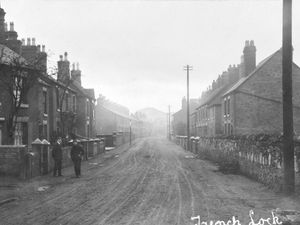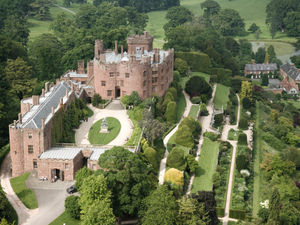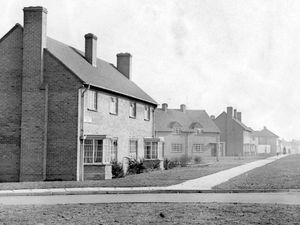Rowland Hill: From unconventional headmaster to father of the modern postal service
Looking back at the great life of the inventor of the Penny Black.
First things first, this is not the man on the top of the column outside Shrewsbury's Shire Hall. That is General Rowland Hill, who became commander-in-chief of the British Army in 1828.
It is also not the Sir Rowland Hill commemorated in Hawkstone Park in Shropshire. That Sir Rowland Hill also led an interesting life, developing the Hawkstone estate in the 18th century.
This Sir Rowland Hill, who was dismissed as 'mentally backward' as a youngster, went on to become the father of the modern postal service, the inventor of the postage stamp, and one of the great reformers of 19th century Britain.
Born at 96, Blackwell Street, Kidderminster on December 3, 1795, he was the third of six sons born to schoolmaster Thomas Wright Hill and his wife Sarah.
While Rowland was still a child, the family moved to Wolverhampton and lived in Horsehills Drive, off Compton Road.
His father Thomas Hill was a well-known academic and radical political activist, who is said to have invented the single transferable vote electoral system. But although he was a learned man from a distinguished background, the family was actually quite poor and it was his childhood experience of the postal service that convinced him there must be a fairer way of dealing with the cost of mail.
Back in the 18th and early 19th century, it was the recipient rather than the sender of mail who was responsible for postal charges, and the fees were calculated by a complicated formula based on the distance the letter had travelled.
This meant an unsolicited letter from another part of the country could incur significant fees, and for somebody living at the margins an unexpected delivery could be the source of huge stress.
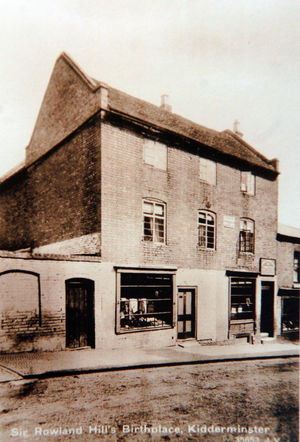
As a child, Hill always remembered his mother’s fear of a letter arriving with heavy postage to be paid.
On one occasion he was sent out to sell a bag of rags to cover the cost of the postage.
These memories stayed with him for decades, and he was determined that nobody should ever have to live in fear of the postman again.
Rowland’s education was marred by scarlet fever which saw him fall behind in his studies, although his intellectual capacity was never in doubt.
By the time he was 12, he was a tutor in his father’s school Hill Top in Lionel Street, Birmingham, where he taught astronomy, navigation, architecture and mathematics.
He met his future wife Caroline Pearson when he was six years old, and the young lovebirds are said to have shared their first kiss inside a large culvert which passed under the Tettenhall Road.
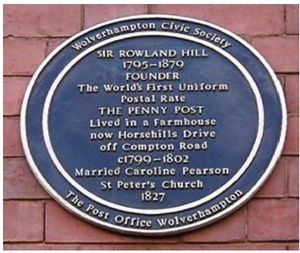
Caroline, or ‘Car’ as Hill nicknamed her, was the eldest daughter of Joseph Pearson, a wealthy industrialist in the town. The couple married on September 27, 1827, at St Peter’s Collegiate Church, Wolverhampton.
Initially, it looked like Hill would follow in his father’s footsteps by pursuing a career in education. In 1819, he moved Hill Top to the wealthy suburb of Edgbaston where it was renamed Hazeldine. Its unorthodox and sometimes controversial teaching style proved to be highly successful setting a template for the educational aspirations of a fast-growing middle class.
The school, which owed a lot of its ideas to the chemist and philosopher Joseph Priestley, was equipped with both a science laboratory and a swimming pool.
In 1827, Hill and his wife Caroline moved to the Tottenham area of London where they set up another, even more unconventional school, Bruce Castle. There was no corporal punishment, and discipline was enforced by its own court of justice with pupils sitting as judges. At a time when most mainstream schools focused on teaching the classics, science, foreign languages and engineering were compulsory at Bruce Castle. Hill believed that the role of a teacher was not to impart facts but to give pupils a desire for learning. Among his pupils were the sons of Charles Babbage, the man who invented the computer. There was no questioning the school's outstanding results, but the offbeat approached raised one or two eyebrows among the educational establishment, provoking plenty of lively debate.
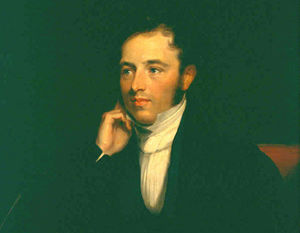
Hill looked destined to spend the rest of his life as a schoolmaster, but his energy and desire for innovation meant he was soon seeking new fields.
At 38, he became the secretary of the South Australia Commission, an association which helped in the colonising of the country.
But it was his pamphlet proposing reform of the postal service which really set the cat among the pigeons. Heavily influenced by his own childhood, he considered the postal system outdated and unfair. While families such as his worried about how they would pay the postman, MPs and other high ranking people were able to send letters free of charge through the 'freepost' franking system. This was subject to widespread abuse, with members of the public frequently asking their MPs to frank their letters to avoid postal charges. He observed that the cost of sending a single-page latter from London to Edinburgh cost 1s 1½d, a considerable sum in those days. The cost to the Post Office, however, was calculated by Hill at a fraction of 1d.
He proposed that letters should be charged by weight not distance, that franking should be abolished and that postage should be paid by the sender, not the receiver.
The main points of his scheme were the introduction of a uniform low rate and prepayment. He also suggested that a 'bit of paper just large enough to bear the stamp and covered at the back with a glutinous wash' should be used to show that postage had been paid.
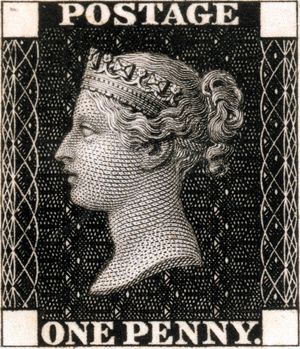
His scheme went before Parliament in 1837 and an Act of Parliament gave the Royal Assent in 1839. Hill, who had hoped for a job at the Post Office, was instead given a two-year appointment with the Treasury where he was tasked with implementing his reforms.
He proposed that from January 10, 1840, a letter not exceeding half an ounce could be sent to any part of Britain, from any part of Britain for one penny. The first stamp, known as the Penny Black, went on sale in London on 1 May 1840, becoming valid for postage on 6 May.
One obvious weakness with stamps was the risk of criminals abusing the system by producing counterfeits, and it was for this reason that he suggested the first stamps should feature a portrait of Queen Victoria.
"There is nothing in which minute differences of execution are so readily detected as in a representation of the human face," he said.
"I would therefore advise that a head of the Queen by one of our first artists should be introduced."
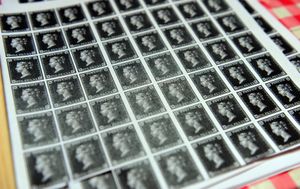
He proposed the portrait should be based upon a medal by William Wyon, and the design was engraved by Frederick Heath, with the labels being printed by Perkins, Bacon & Petch.
Postal reform was an immediate success. The number of chargeable letters in 1839 had been only about 76 million. By 1850 this had increased to almost 350 million and continued to grow dramatically. The modest postal charges initially led to a drop in revenue, but with the increase of letters it soon recovered. Adhesive postage stamps were gradually introduced throughout the world. With the change to charging by weight envelopes became normal for the first time.
Yet the revolutionary system was not universally welcomed. Many MPs, who had become accustomed to free postage, were not impressed, and hoped the scheme would fail.
And there were teething troubles. Despite Hill's best efforts, the Penny Black proved easy to forge. This was swiftly addressed by changing the colour, and the stamp then became known as the Penny Red.
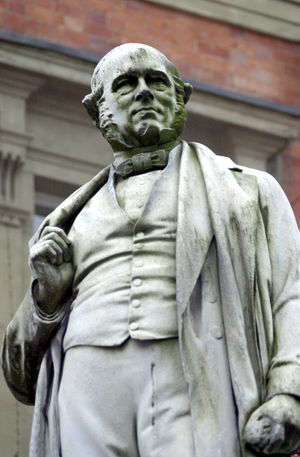
In 1842, a change in government led to Hill losing his post in the Treasury, and he joined the London and Brighton Railway Company. In 1854 he returned to the Government, this time as secretary to the Postmaster General, a position he held until his retirement in 1864.
During this time he introduced other reforms such as money orders, better rural services, travelling post offices and the Post Office Savings Bank.
By the time of his retirement, doubts about his postal reforms had been dispelled, and it was generally acknowledged that the universal service was an unqualified success. In recognition of his work the Treasury awarded him his full salary as a pension for life, plus a special parliamentary grant of £20,000.
His efforts were also recognised with a knighthood in 1860, and four years later he won the first Royal Society of Arts Albert Medal. He was granted the freedom of London in 1879.
He died in 1879 at the age of 84 and was buried in Westminster Abbey. He had one son, Pearson, and three daughters.


